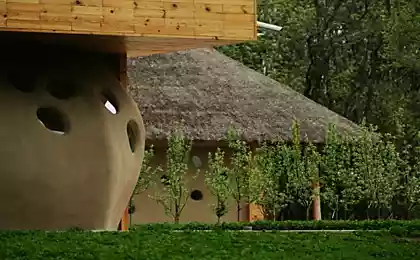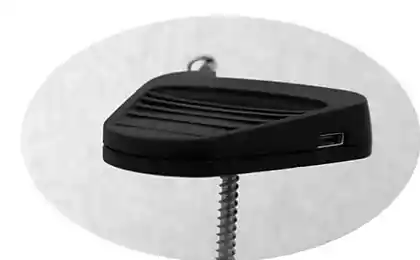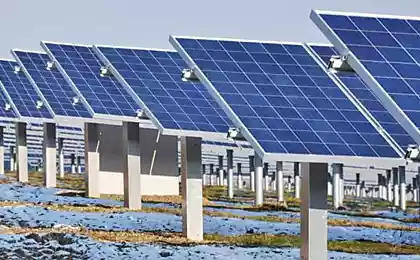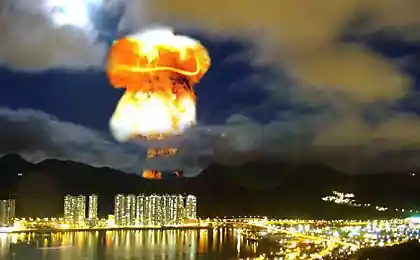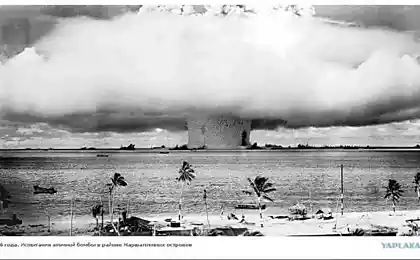523
"Cold roof" care about the environment
The concept of American scientists, suggested that due to the ability of the reflection of sunlight of the roof in white color can withstand climate change, is becoming increasingly popular in the world. The impressive results of years of testing the efficiency of white roofs of various materials has allowed the American Association of engineers in heating, cooling and air conditioning systems (ASHRAE) in 1999 to officially recognize the concept of "cool roofs" in the document of ASHRAE 90.1 ("Energy standard for buildings except low-rise residential buildings"). To date, this technology is mentioned in the rankings of "green building" (the U.S. Green Building Council''s LEED and the Green Building Initiative (GBI)'s Green Globes) and is gaining popularity in different countries of the world, especially in regions with a hot climate.
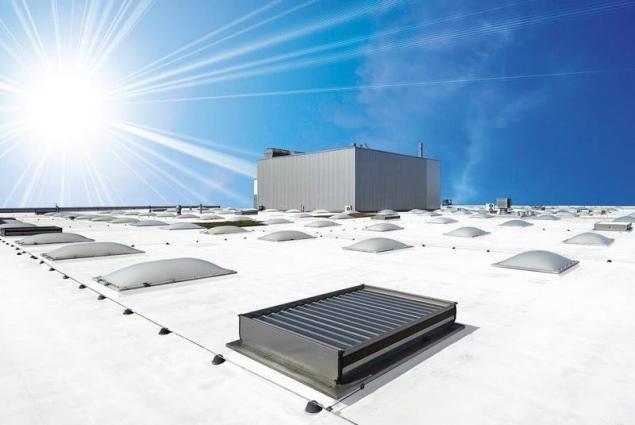
Why are they cold?
"Cold" is considered the roof that reflects a large part of the incident light flux and effective discharge from the surface heat. These roofs most often are white and reflect the entire spectrum of solar radiation.
It is known that the roof is black, absorbing the sun's rays heats up almost to 50 degrees above ambient air temperature. That is, if the window is +30, the roof can be up to +80 degrees. Roofing with high reflectivity, provide light material, absorbs less solar energy than traditional dark roofs. The temperature of a white roof typically increases only 5-14 ° C in comparison with the environment. This means a lower surface temperature, which directly leads to lower heating of the air inside the building and, consequently, to lower energy costs for air conditioning.
The main parameters that characterize the "coolness" of roofs are reflective and thermal radiation.
Reflectivity is the ratio of the reflected radiation energy to the total energy incident on the surface of the body. Thermal radiation also shows how effective the coating is able to remove heat from its surface. Both of these parameters are important for determining the quality of roof – coating with high reflectivity, but low thermal radiation, cannot be considered "cold". For example, the metal perfectly reflects light – that's why it glitters in the sun! – but bad for heat dissipation, which gives us the possibility to bake meat in foil, but you can't create metal really "cool" roof.
In order to account for both of these properties were introduced with a special reflectance of sunlight SRI (Solar Reflectance Index). The higher the ratio, the lower the temperature of the roof after a long Sunny day. Black roof will have a ratio SRI of zero, and a completely white surface – hundred. The coefficient of reflection of sunlight conventional dark roofs usually does not exceed 20.
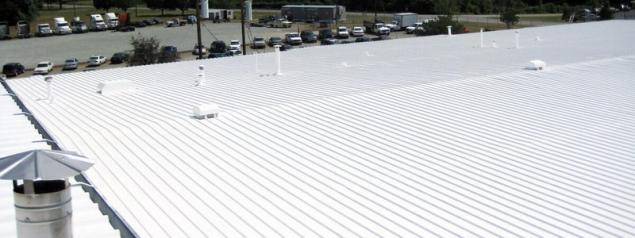
The use of "cool" roofs, especially in countries with a hot climate, has many advantages – both long-and instantly.
The benefits for tenants of the building:
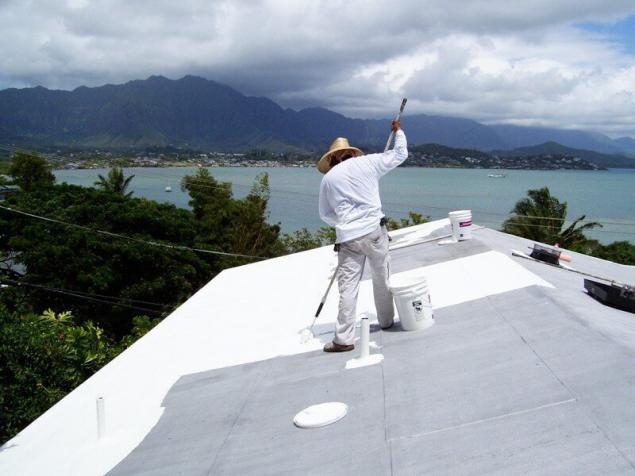
"Cold" can be done almost any roof, causing her a special coating. So, the mayor of new York Michael Bloomberg has proposed a program to reduce greenhouse gas emissions in the city by 30% in year 2030, including by equipping roofs with acrylic coating white color. However, more sophisticated path – the manufacture of such reflective materials in the factory. Now the materials for the device cold roofing is in range of Russian manufacturers.
When selecting materials for "cool roofs" available from the manufacturer of the certificate issued by results of tests, will assess the SRI index and to calculate in advance the anticipated energy savings during the cooling. published
Source: vseokrovle.ru/kholodnye-kryshi-zabotyatsya-ob-okruzhayushhejj-srede.html

Why are they cold?
"Cold" is considered the roof that reflects a large part of the incident light flux and effective discharge from the surface heat. These roofs most often are white and reflect the entire spectrum of solar radiation.
It is known that the roof is black, absorbing the sun's rays heats up almost to 50 degrees above ambient air temperature. That is, if the window is +30, the roof can be up to +80 degrees. Roofing with high reflectivity, provide light material, absorbs less solar energy than traditional dark roofs. The temperature of a white roof typically increases only 5-14 ° C in comparison with the environment. This means a lower surface temperature, which directly leads to lower heating of the air inside the building and, consequently, to lower energy costs for air conditioning.
The main parameters that characterize the "coolness" of roofs are reflective and thermal radiation.
Reflectivity is the ratio of the reflected radiation energy to the total energy incident on the surface of the body. Thermal radiation also shows how effective the coating is able to remove heat from its surface. Both of these parameters are important for determining the quality of roof – coating with high reflectivity, but low thermal radiation, cannot be considered "cold". For example, the metal perfectly reflects light – that's why it glitters in the sun! – but bad for heat dissipation, which gives us the possibility to bake meat in foil, but you can't create metal really "cool" roof.
In order to account for both of these properties were introduced with a special reflectance of sunlight SRI (Solar Reflectance Index). The higher the ratio, the lower the temperature of the roof after a long Sunny day. Black roof will have a ratio SRI of zero, and a completely white surface – hundred. The coefficient of reflection of sunlight conventional dark roofs usually does not exceed 20.

The use of "cool" roofs, especially in countries with a hot climate, has many advantages – both long-and instantly.
The benefits for tenants of the building:
- Significant (up to 15%!) reduced air conditioning costs in the hot season;
- Improvement of the microclimate of internal premises;
- A more gentle mode of roofing, which means – an increase in its service life. Cover the dark color is characterized by a high surface temperature in the afternoon and the large temperature difference during the day — the combination of these two factors causes a rapid loss of performance properties of the coating. In addition, do not forget about the devastation caused by the invisible ultraviolet part of the radiation flux. For example, in the case of membrane roofing that is exposed to UV radiation violated the chemical bonds within the polymer, which causes the evaporation of plasticizer and ageing of the roofing material.
- The decrease of the local air temperature in a city or village, which improves air quality and prevents the formation of smog. In English literature there is a special term denoting a zone of increased temperature associated with habitats or industrial activities of people – the urban heat island, literally – "urban heat island". This phenomenon appears far – to change the usual course of air masses, violated the annual cycles of plants and animals.
- Reducing peak loads on the mains in particularly hot days, with the result that the equipment is able to work much longer.
- Reducing greenhouse gas emissions. It is estimated that the cold roof area of 93 square meters (1000 square feet) for 20 years, prevents the release into the air 20 tons of carbon dioxide! If all roofs in hot countries become reflective, motorists would not have to worry about the environmentally unfriendly their "iron horses" – emissions of carbon dioxide in the atmosphere would be reduced by 24 gigatonnes, which corresponds to the work of 300 million cars for 20 years!
- Reducing the amount of heat accumulated by the atmosphere, slowing climate change. When light falls on a "cold" roof, it is reflected from her and leaves the planet's atmosphere, which for him is absolutely transparent. When the light falls on a conventional roof, most of it is converted into longer – wavelength radiation is what we commonly call heat. For this type of radiation the Earth's atmosphere is opaque and so easy to leave the rays can't. Not being able to go beyond the atmosphere, this excess heat becomes the cause of slow but steady change of climate.

"Cold" can be done almost any roof, causing her a special coating. So, the mayor of new York Michael Bloomberg has proposed a program to reduce greenhouse gas emissions in the city by 30% in year 2030, including by equipping roofs with acrylic coating white color. However, more sophisticated path – the manufacture of such reflective materials in the factory. Now the materials for the device cold roofing is in range of Russian manufacturers.
When selecting materials for "cool roofs" available from the manufacturer of the certificate issued by results of tests, will assess the SRI index and to calculate in advance the anticipated energy savings during the cooling. published
Source: vseokrovle.ru/kholodnye-kryshi-zabotyatsya-ob-okruzhayushhejj-srede.html





